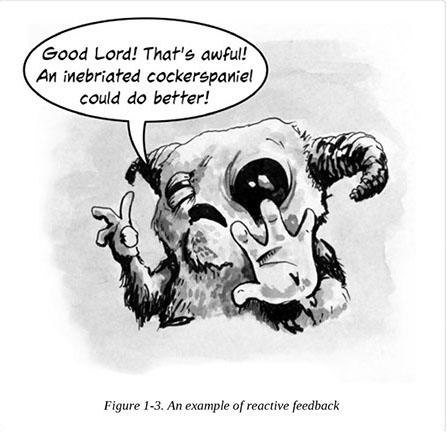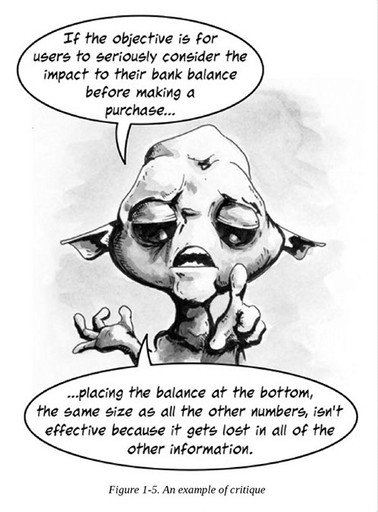DESIGN CRITIQUE
Critique Best Practices
Start by gathering some product framing before your critique and have this ready to share with the group to give them context and your objective.
Share the following:
Project Context
Q. Who are the users and their goals?
Q. What is the project, what is the problem(s) your solving?
Feedback Preferences
Q. What are the task that you're showing (this helps because it gives the viewer the objective, so they can give good feedback)?
Q. What type(s) feedback are you looking for?
When giving feedback
Don't do this:
Reactive based feedback:

Reactive based feedback:

When giving feedback
Do this: Frame your feedback based on the objective and state the problem without getting into the solution. This helps the group see the problem and gives the person presenting the opportunity to come up with their own solutions as there are many ways to solve the same problem. Because solution are opinion based where as problems are based on evidential observations.
Based on the objective feedback:

Some practical guides
Be straightforward & specific — feedback should be clear & explain what is working/not working
• Don't say "I guess this looks ok"
• Do say "The overall layout is really balancing the information and the bold title helps set the visual hierarchy"
Offer suggestions and not demands — trust the design team will explore new solutions and make their own calls
• Don't say "Go copy what "company name" here is doing"
• Do say "I'm not sure if this follows a current convention or design pattern, might be worth looking into how others do this"
Link feedback to goals — keep it objective
• Don't say "Make the button pop"
• Do say "I didn't notice the call-to-action button right away—we could miss conversions with the current placement"
Problem-focused mindset— do your best to articulate the problem and come into the critique with a problem-focused mindset
• Don't say "Put the call to action text at the very top"
• Do say "Having the priority of important communication below the fold, made it difficult for me to understand what I needed to do next"
The Critique Framework
You present your work....
Give time for everyone to silently give feedback and comment within the framework within figma, within each quadrant. You can also instruct people to comment within the figma prototype or tell the group to only comment within the framework—you can try different ways and see what works best for your group dynamic. Time box this and let everyone know when time is up, then move to the next step:
Open and review each comment (one at a time) and give each commenter the opportunity to elaborate on their statement, if needed.
